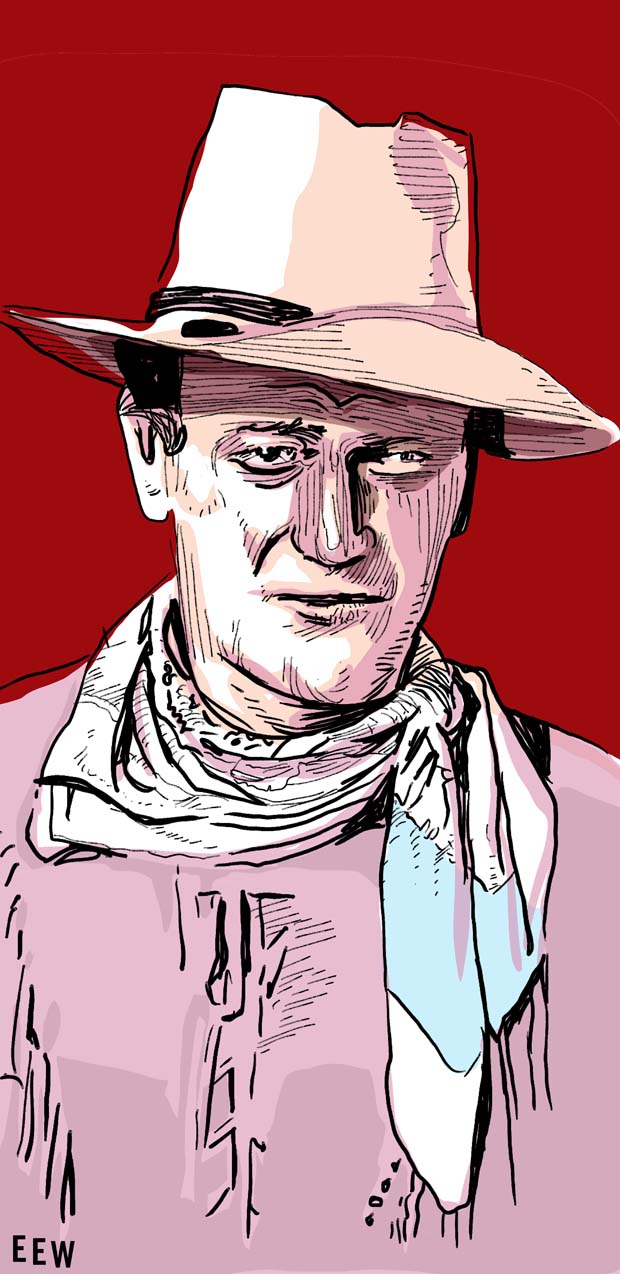Hondo - 1953

Hondo - Released November 27, 1953 - Directed by John Farrow (and some by John Ford)
John Wayne plays a character (Hondo Lane) who is something of the antithesis of racist Ethan Edwards, the character he played in the 1956 The Searchers, which is the better movie but only by virtue of the masterful John Ford direction (who also, incidentally, helped out with the last part of filming on this movie because Farrow had to leave the set for another project when Hondo ran over schedule). Each film is a rumination on the dilemma of violent men (with varying degrees of reluctance), and clashing cultures, fighting over the American Western landscape where it is always a cinematic 1870 (particularly Hondo. Ward Bond is on hand, of course, and struggles with remembering the calendar date of whether it is 1869 or 1870. He decides it is 1870).
Hondo is given a good presentation from director Farrow, though the gimmick of 3D filming (which is how the film was originally released) intrudes in places with various characters thrusting toward the camera much in the same way the Creature from the Black Lagoon thrust toward the camera in that other famous 3D movie.
Like the Black Lagoon, the local area where maybe/maybe-not-widow Angie Lowe (Geraldine Page) lives only looks peaceful and serene for a short time until trouble is stirred up. In the past, Hondo lived with the Apache for five years and understands how the current wave of rising tension between Vittoria, the Apache chief, and the local white settlers has reached a lethal pitch. As he tells Angie after stumbling upon her farm after losing his horse, there's no word in the Apache language for "lie," which is what the treaty between the settlers and the natives has become because the US government has broken the agreement.
Based on the Louis L'amour novel, Hondo shows it's literary origins with a kind of dialogue that doesn't show up in other Wayne movies. Not only do we steadily get more layers of personality for the main characters as the film progresses, which is what any decent screenplay does, but the dialogue serves the purpose of also educating us about the tribal customs of the Apache. Aside from the novelistic plot and dialogue, Farrow (and I guess, John Ford) pack in a lot of action sequences which would not be out of place in any other dozen well-made Western films of the 1950s.
Good stunt work and a lot of dust getting kicked up by speeding horses, also one of the more unusual dog companions for a hero, makes Hondo simultaneously both a well-done western and something of an apologia for the Apache. At the end, when Wayne and Page tear out of the territory for California, it's not to escape the Apache, but the gossip of the white people.
More John Wayne
AMAZON: Boris Karloff: A Gentleman's Life - 356 Page Biography
Original Page May 20, 2016 | Updated Jan 2018
What's Recent
- The Devil and Miss Jones - 1941
- Sinners - 2025
- Something for the Boys - 1944
- The Mark of Zorro - 1940
- The Woman They Almost Lynched - 1953
- The Cat Girl - 1957
- El Vampiro - 1957
- Adventures of Hajji Baba – 1954
- Shanghai Express 1932
- Pandora's Box – 1929
- Diary of A Chambermaid - 1946
- The City Without Jews - 1924
- The Long Haul
- Midnight, 1939
- Hercules Against the Moon Men, 1964
- Send Me No Flowers - 1964
- Raymie - 1964.
- The Hangman 1959
- Kiss Me, Deadly - 1955
- Dracula's Daughter - 1936
- Crossing Delancey - 1988
- The Scavengers – 1959
- Mr. Hobbs Takes A Vacation - 1962
- Jackpot – 2024
- Surf Party - 1964
- Cyclotrode X – 1966